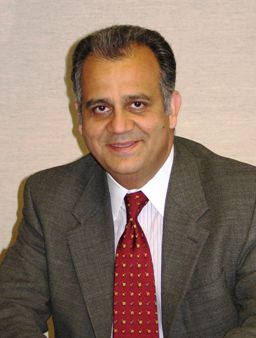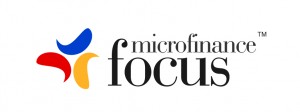An accent on social returns from microfinance: the story of Deutsche Bank
By Dr Priyanka Jayashankar,
 Microfinance Focus, May 30, 2013: (Asad Mahmood, the Managing Director of Global Social Investment Funds at Deutsche Bank, discussed Deutsche bank’s initiatives to promote microfinance and social entrepreneurship to Microfinance Focus on the sidelines of the 9th Annual Zell Center Chicago Microfinance Conference)
Microfinance Focus, May 30, 2013: (Asad Mahmood, the Managing Director of Global Social Investment Funds at Deutsche Bank, discussed Deutsche bank’s initiatives to promote microfinance and social entrepreneurship to Microfinance Focus on the sidelines of the 9th Annual Zell Center Chicago Microfinance Conference)
Asad Mahmood straddles two worlds: one which is replete with sophisticated financial systems and high net worth investors and the other, where microfinance clients eke out a living with tiny enterprises in developing countries. As the Managing Director of Global Social Investment Funds at Deutsche Bank, Asad Mahmood urges MFIs to exercise moderation while commercialising. “In a social business, there are motivations not to maximize profits but to have a positive impact on the lives of the poor,” Mahmood pointed out.
Banking on social returns
Attaining a balance between social and financial targets is of paramount importance to Mahmood. Deutsche Bank has developed a balanced return framework and social scorecards to ensure that investees fulfil their financial and social obligations. “The real jewel of microfinance is not commercial finance but the social impact. The reason why people come to invest in social investment funds is the way in which we use business models to achieve social goals,” he explained.
The benchmarks used in Deutsche Bank’s social scorecard include governance, culture, outreach, pricing and the organisation’s performance relative to peers. After spearheading several social investment initiatives, Mahmood has realised that the best microfinance institutions are those which internalize social aspects in managing their business.
Social performance measurement tends to be subjective, as intangible aspects of the business such as the organisational mission, vision, goals and culture would have to be factored in. In order to standardize social performance measurement, Deutsche Bank works with its investees to track individualized social goals against pre-determined targets, which is in tandem with the Social Performance Task Force’s universal standards. Outreach-related data such as the average loan size, the percentage of women clients and client drop-out rates are also regularly collected. Mahmood pointed out that investee-MFIs have to adhere to a set of covenants on social issues. As per Deutsche Bank’s stipulations, a committee has to be constituted by the senior management of the MFI to look into pricing, product development and interest rates. Asad Mahmood has also worked on initiatives such as The Pocantico Declaration, the SMART Campaign and the Seal of Excellence along with other microfinance players to make MFIs more socially responsible.
Where the microfinance customer is king
The lives of microfinance clients are volatile due to the triple whammy of uncertain occupations, low income and unpredictable cashflows as described in Portfolios of the Poor.* Hence, opportunities have to be created for clients to generate assets. Operating expenses should be lowered to enable MFIs to charge lower interest rates. This reduction in interest rates would allow clients to maintain a greater share of the generated profits to help build assets and to better cope with cash flow uncertainties, which is a key characteristic of the financial lives of the poor.
Customer service, in his view, is not up to the mark in much of the microfinance sector, which went on a commercialisation drive in the 2000s. “In my opinion, MFIs have to shift their focus from capital to customers,” said Mahmood, who has several years of experience in the financial services sector.
The microfinance crisis in Andhra Pradesh has drastically changed the image of MFIs. As Mahmood put it, “the pendulum has swung from angelical to diabolical,” and the truth, he feels, is somewhere in the middle. Citing the examples of Grameen Koota, Cashpor and Janalakshmi (which have been funded by Deutsche Bank), Mahmood observed that some Indian MFIs have recognised the need for greater accountability. He foresees that savings and technology would pave the way for the next revolution in microfinance.
Economics of social investment
A social fund executive has multiple roles to juggle as “a beggar, king and advocate,” explains Mahmood. As a beggar, the executive has to ask institutional investors for funding; as a king, he manages funds worth millions and as an advocate, he strives for the transformation of the microfinance sector. A social investor has the same gauges as a commercial investor, but the calibration would vary in the light of country-specific risks. Most of Deutsche Bank’s funding comes from institutional investors such as AXA, State Street, Storebrand, insurance companies and pension funds.
Deutsche Bank backs MFIs worldwide with a diverse range of debt-based financial instruments, some of which generate returns below the market rate and others provide closer to market returns. The bank is currently developing a “social bond” with the rating agency Moody’s, wherein the bond price would decrease if the social rating of the investee improves. To give fillip to micro-savings, Deutsche Bank is collaborating with Oxfam, through which ROSCAs (rotating savings and credit organisations) can be converted into MFIs. A social bond will be issued to fund this initiative, and the bond price will decrease if the number of savers increases.
To cater to the broader needs of the BoP, Deutsche Bank is also working towards making social enterprises profitable. A fund called the Essential Capital Consortium is being created, wherein no single entity has a first-loss piece. The fund is based on a step-up coupon structure, wherein a lower coupon rate is payable to investors in the initial stage. In the subsequent period, the bank would raise the coupon rate for the investors and generate a higher internal rate of return. Deutsche Bank would only take half of the management fee and the remaining amount would be placed in a reserve. “We can take the remaining fee only if we meet our financial and social obligations,” said Asad Mahmood. The bank would have to work towards bringing social enterprises out of the red by meeting their working capital requirements.
Funding social enterprise growth
Deutsche Bank was one of the first banks to create a social fund outside the microfinance sector. The bank partnered The International Agency for the Prevention of Blindness (IAPB) and Ashoka to make eye care affordable in the developing world through loans and guarantees. Currently, Deutsche Bank is funding 30 social enterprises across a range of sectors. The solar energy company d.light. received a line of credit worth $4 million from Deutsche Bank, due to which the social enterprise’s revenues increased by one-third to $20 million. “d.light had used equity funding for managing inventories and our line of credit helped the company meet its working capital requirements,” Mahmood explained. While he is wary of “benevolent puffery” seeping into the field of impact investment, he feels there is immense scope for social enterprises to partner with the BoP across a range of sectors spanning healthcare, education, energy and sanitation.
*Collins, Daryl, Morduch, Jonathan, Rutherford, Stuart and Ruthven, Orlanda, “Portfolios of the poor: How the world’s poor live on $2 a day,” Princeton University Press, 2009.

